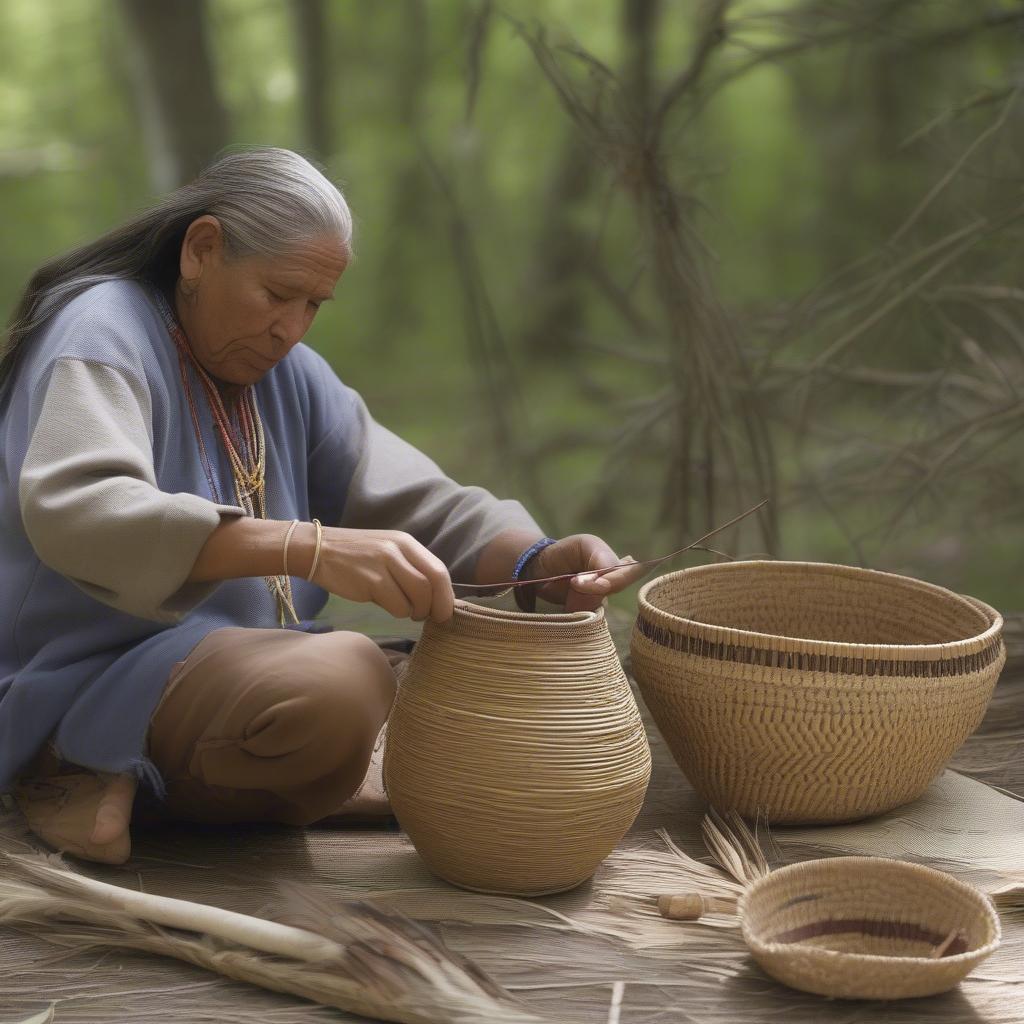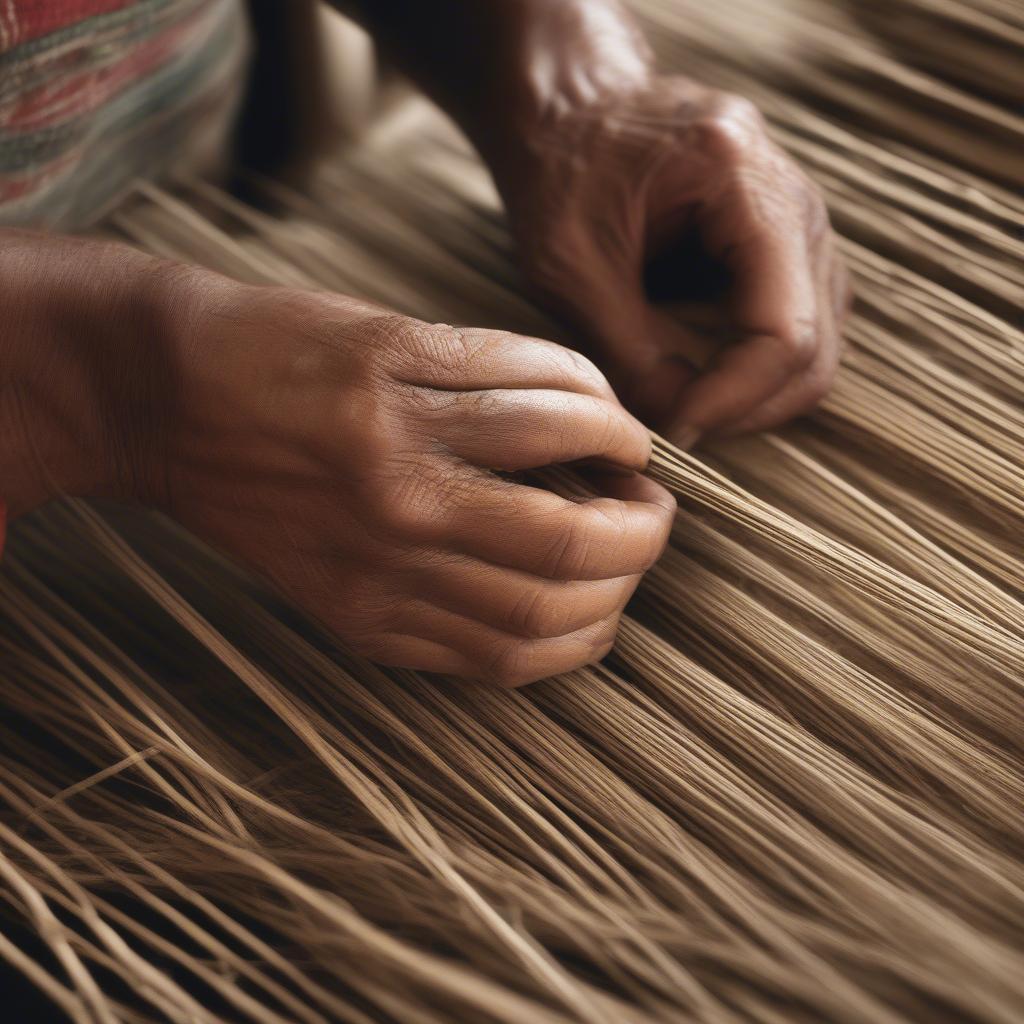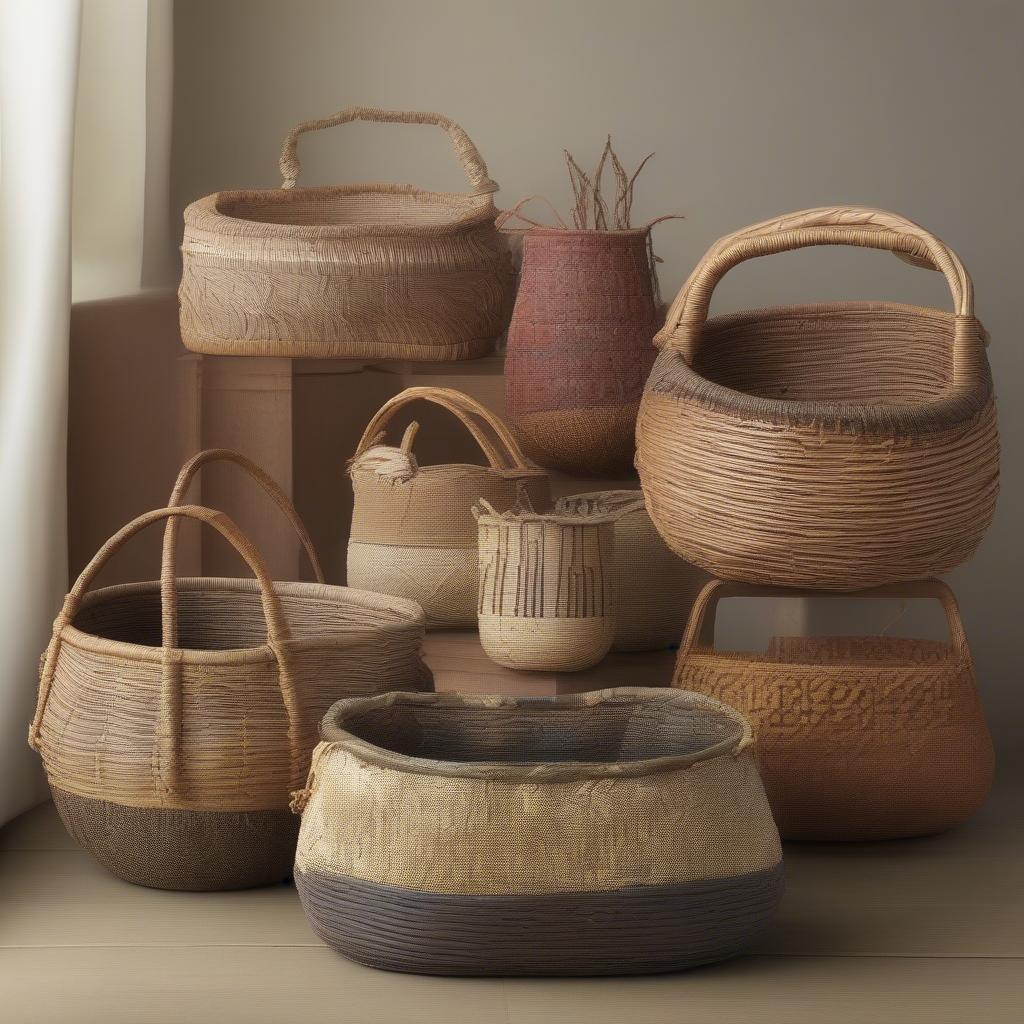Basket Weaving
Traditional Basket Weaving Techniques: A Timeless Craft
Traditional Basket Weaving Techniques have been passed down through generations, representing a rich tapestry of cultural heritage and artistic expression. From simple gathering baskets to intricate ceremonial pieces, the art of basket weaving connects us to the past while continuing to evolve in the present. This article delves into the fascinating world of traditional basket weaving, exploring its history, diverse techniques, and the enduring appeal of this timeless craft.  Native American artisan demonstrating traditional basket weaving techniques with natural materials.
Native American artisan demonstrating traditional basket weaving techniques with natural materials.
Basket weaving is one of the oldest crafts in human history, predating pottery and even textiles. Early baskets were likely simple containers made from readily available materials like grasses, reeds, and vines, serving practical purposes for gathering, storage, and transport. As societies developed, so did the complexity and artistry of basket weaving. Different cultures around the world developed their own unique styles, techniques, and materials, reflecting their environment and cultural values. puma basket weave sneakers
Exploring the Diversity of Traditional Basket Weaving Techniques
Traditional basket weaving techniques vary widely depending on the materials used and the desired outcome. Some common techniques include:
- Coiling: This technique involves spiraling a foundation material and stitching it together with another material. Coiling is often used to create sturdy and durable baskets.
- Twining: Twining involves weaving two or more flexible weavers over and under rigid stakes or spokes. This method allows for intricate patterns and designs.
- Plaiting: Plaiting, similar to braiding, involves interlacing strands of material in an over-under pattern. This technique creates a flexible and often decorative surface.
- Wickerwork: Wickerwork utilizes flexible reeds or willow to create a woven structure, often used in furniture and larger baskets.
 Close-up view of the twining technique in basket weaving, showing the interlacing of weavers and stakes.
Close-up view of the twining technique in basket weaving, showing the interlacing of weavers and stakes.
What Materials are Used in Traditional Basket Weaving?
Traditional basket weaving often relies on natural materials sourced from the local environment. These materials include:
- Willow: A flexible and durable material commonly used in European basket weaving traditions.
- Reed: Various types of reed, including flat reed and round reed, are widely used for their strength and versatility. basket weaving flat reed
- Rattan: A strong and flexible vine native to Southeast Asia, often used in furniture and decorative basketry.
- Grasses and Vines: Numerous types of grasses and vines are used in various basket weaving traditions around the world.
- Bark: Tree bark, such as cedar bark, can be used to create strong and waterproof baskets.
“The choice of material is often dictated by both availability and the intended function of the basket,” explains renowned basket weaver, Anya Sharma. “A gathering basket might be made from readily available grasses, while a ceremonial basket might incorporate more precious materials like dyed reeds or feathers.” basket weaving courses uk
Preserving and Promoting Traditional Basket Weaving Techniques
In today’s fast-paced world, traditional basket weaving techniques face the challenge of remaining relevant. However, a growing appreciation for handmade crafts and the unique beauty of natural materials is fueling a resurgence of interest in this ancient art form. Many artisans and organizations are dedicated to preserving and promoting traditional basket weaving techniques through workshops, classes, and online resources. ancient basket weaving celtic
 Display of finished traditional woven baskets in various shapes, sizes, and patterns.
Display of finished traditional woven baskets in various shapes, sizes, and patterns.
Conclusion: The Enduring Legacy of Traditional Basket Weaving Techniques
Traditional basket weaving techniques represent a powerful connection to our past and a testament to human ingenuity. From practical tools to exquisite works of art, baskets embody the artistry and cultural heritage of communities around the world. By continuing to learn, practice, and appreciate these techniques, we can ensure that the timeless craft of basket weaving continues to flourish for generations to come. If you are intrigued by the artistry of traditional basket weaving, consider exploring basket weaving camden tn for further insights.
FAQ
- What are the basic basket weaving techniques? The most common techniques are coiling, twining, plaiting, and wickerwork.
- What materials are best for beginners? Reed and raffia are good starting materials due to their flexibility and ease of use.
- Where can I learn traditional basket weaving techniques? Many workshops and online resources offer instruction for beginners and advanced weavers.
- How long does it take to weave a basket? The time varies depending on the size, complexity, and technique used.
- What is the difference between wicker and rattan? Wicker refers to the weaving style, while rattan is a specific type of material often used in wickerwork.
When you need help, don’t hesitate to contact us in Hanoi, Vietnam or Tech Avenue, Suite 12, San Francisco, CA 94105, USA. Our customer support team is available 24/7.
